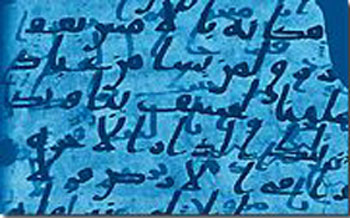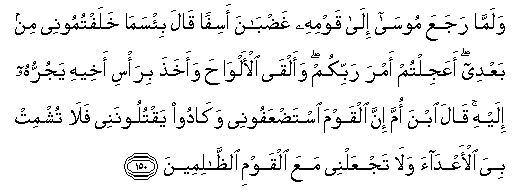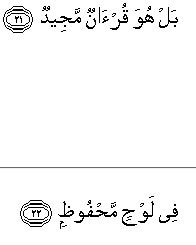

From Alwāḥ to Ziyārā :
The literary forms and nature of the scriptural writings of Mīrzā Ḥusayn `Alī Nūrī, Bahā’-Allāh (1817-1892) and Sayyid `Ali Muhammad Shirazi, the Bab (1819-1850).
IN PROGRESS - Last updated 19-07-2021.
✦
Stephen Lambden UC Merced.
Last modified 19-07-2021.
IN PROGRESS
In line with the conviction that they were expressions of waḥy (divine revelation), the sacred kalimat Allāh (Word of God), like the (original) Torah, Gospels and Qur'ān, many of these writings have specific designations derived, for the most part, from time-honored (largely) Abrahamic religious terminology. Key designations for Baha'u'llah's writings thue include :
- (1) لوح , الواح Lawḥ (pl. alwāḥ), scriptural `tablets’. (Per.) Lawh-i aqdas (The Most Holy Tablet');
- (2) سورة / سور Sūrah, (pl. suwar). Surahs or (loosely), sections, `chapters'. Thus, for example, Surat al-Khitab ('The Surah of the Discourse'), Surat al-bayan (The Surah of the Exposition') ...
- (3) كِتَاب/ كُتُب Kitāb (pl. kutub), book, writings, letters, pages .. hence (Pers.) kitāb-i iqan (Book of Certitude) or (Arabic) al-kitab al-aqdas ("The Most Holy Book" = Per. Kitab-i aqdas).
- (4) صَحِيف / صُحُف Saḥīfa (pl. ṣuḥuf ) (scrolls, sacred writings'...), thus (Per.) Saḥīfa-yi Shattiyya (`The Scroll of the Torrent').
- (5) Risala (pl. Rasā'il), Treatise... e.g. (Per.) Risala su'al va jawab ('Trestise expressing Questions and Answers');
- (6) Tafsir (tafa'sir) or Sharh Commentary. e.g. Tafsir Surat al-shams (Commentary on the Surah of the Sun = Q. 91).
- (7) Ziyarat-Nama (Visitation Tablets). e.g. (Per.) Ziyarat-nama-yi Tahira, Qurrat al-`Ayn (Visiting Tablet for Tahira [Fatima Baraghani, d. 1852 CE.], the `Solace of the Eyes')
- Add
(1) Lawḥ (pl. alwāḥ), Tablet.
لوح , الواح
The Qur'anic Arabic word for scriprural Tablet is Lawḥ (pl. alwāḥ) which corresponds to the biblical Hebrew ל֥וּחַ = luḥ (pl. luḥōṯ = הַלֻּחֹ֥ת = "the Tablets" ). This biblical term indicates, among other things, the חָר֖וּת עַל־ הַלֻּחֹֽת׃ , Tarot `al ha-luḥōṯ = " the Tablets of the Law (Torah)" given by God (on Mt. Sinai) to the prophet Moses (Exodus 32:16). The phrase הַלֻּחֹ֥ת ha-luḥōṯ, "The Tablets", occurs some 14 times in the Hebrew Bible largely in connection with the "Tablets of the Law" (see also, Exodus 32:19; 34:1, 28; Deut. 9:17; 10:2ff., etc.).
In the Qur'an the Arabic masculine noun lawḥ ("Tablet") or its plural alwāḥ occur five times. Three of these occurences are of the plural الواح alwāḥ and are found in the 7th Surat al-A’rāf ("the Heights"). They relate to the episode of Moses' receipt of the `Tablets of the [Israelite, Jewish] Law' on Mount Sinai and his subsequent destruction of them when he observed what Aaron and the people had done (see Q. 7:145,150,154):
Q. 7:145.

"And We ordained laws for him [Moses] in the Tablets (alwāḥ). In all matters, both commanding and explaining All things (kulli shay' in), (and said): "Take and hold these With firmness, and enjoin Thy people to hold fast By the best in the precepts: Soon shall I show you The homes of the wicked,— (How they lie desolate)."
Q. 7:150.

"When Moses came back To his people [from Sinai], angry and grieved, He said: "Evil it is that ye Have done in my place In my absence: did ye Make haste to bring on The judgment of your Lord?" He put down the Tablets (al-alwah), Seized his brother by (the hair Of) his head, and dragged him To him. Aaron said: "Son of my mother! The people Did indeed reckon me As naught, and went near To slaying me! Make not The enemies rejoice over My misfortune, nor count thou Me amongst the people Of sin."
Q. 7:154.

"When the anger of Moses Was appeased, he took up The Tablets (alwāḥ) : in the writing thereon was guidance and mercy For such as fear their Lord".
The fourth Qur'anic reference is connected with the story of Noah and his Ark found in Surah 54, the Surat al-Qamar (Surah of the Moon). The ark which bore Noah is referred to as a "well-planked vessel, well-cauked" (so Arberry trans.) This illustrates the sense of Lawḥ (pl. alwāḥ) as a wooden plank, also suggestive of a flat surface which something might be written upon as is the case with inscribed scriptural "Tablets".
Q. 54:13.
![]()
"But We bore him [Noah] on an (Ark) made of Broad planks ( dhat alwāḥ) and caulked With palm-fibre (dusur in)"
The fifth and final Qur'anic reference to a (sing.) lawḥ is found in the eighty-fifth Surat al-Burūj, (The Surah of the Zodiacal Signs) :
Q. 85: [21-]22.

The Preserved Tablet (Lawḥ in Mahfuz in).
"Nay! Such is a Glorious Qur'an (Qur'an majid) [85] [inscribed] in a Preserved Tablet (Lawḥ in Mahfuz in)".
Here reference is made to the well-known "Guarded Tablet" (Lawḥ Mahfuz) about which a great deal has been written by Muslim Qur'an commentators as well as by the early Shaykhi leaders - Shaykh Ahmad al-Ahsa'i (d.1241/1826) and Sayyid Kazim al-Rashti (d. 1259/1843). Soo too both the Bab and Baha'-Allah.
Individual items of sacred writ deriving from Baha'-Allah are very often referred to as "Tablets" whether they be in Persian or Arabic (or both), very brief or very long; whether relating to matters "mundane" or to matters profoundly theological or to issues of global significance. Many writings are generally called `Tablets' despite the fact that they may have other names or deisignations such as are listed above. Thus, in other words, on occasion, the totality of Baha'i scriptural writings are reckoned alwāḥ (`sacred Tablets') as are writings also given other literary designations such as those discussed here, e.g. Surahs, Books, Treatises, Scrolls, etc.
We should note at this point a few statements of the Bab regarding Lawh and Lawh al-Mahfuz
In his Tafsīr Sura wa’l-`aṣr (" Commentary on the Surah of `By the Afternoon [Declining Day]', Q. 103) the Bab makes an interesting and instructive interpretation of the Lawḥ al-Ḥafīz or Lawḥ al-Mahfuz when commenting on letter twenty-three, namely the letter "L" (al-lām). :
"Then regarding the 23rd letter which is [the letter] "L" (al-lām).
- [1] It signifieth on this level al-lawḥ al-a`ẓam (the Most Great Tablet) in which exist all modalities (al-shu’ūn).
- [2] Then [additionally it] signifieth the lawḥ al-amr (Tablet of the Command) for God did not send down [reveal] a single thing except He had it penned therein.
- [3] Then [additionally it] signifies the Lawḥ al-Ḥafīz ("Preserved Tablet") which indicates the actions [deeds] of the totality of all the creatures such as have been encompassed in the knowledge of God.
- [4] Then [additionally it] signifieth the Lawḥ which God hath assuredly created through the knowledge of `Azrā’īl through the constriction of all who are possessed of a spirit [soul] (bi-qaby rūḥ kull dhiya rūḥ). For he gazeth upon it [Lawḥ] at every moment. And he followeth the amr (Cause-command) of His Lord in accordance with what hath been stipulated, with the permissionof God -- exalted and glorified be He -- in the dictates (aḥkam) of that Lawḥ".
In the commentary of the Bab, the lawh mahfuz (Preserved Tablet) is presented as the "Greatest Tablet" (al-lawḥ al-akbar). This work of the Bab reflects Islamic esoteric traditions, as well, most notably, as the sometimes arcane Khuṭba al-ṭutunjiyya (The Sermon of the Gulf) ascribed to Imam `Ali (d.40/661), an oration which both Sayyid Kazim Rashti as well as the Bab and Bahā’-Allāh, regarded very highly.
SELECT BIBLIOGRAPHY
Eppel, Robert.
- “Les tables de la Loi et les tables célestes.” Revue d’histoire et de philosophie religieuse 17 (1937): 401–12.
Li Donnici, Lynn & Andrea Lieber.
- Heavenly Tablets: Interpretation, Identity and Tradition in Ancient Judaism (Supplements to the Journal for the Study of Judaism 119), 2008.
Martínez, Florentino, García
- “The Heavenly Tablets in the Book of Jubilees.” pp. 243–60 in Studies in the Book of Jubilees. Ed. Matthias Albani, Jörg Frey, and Armin Lange. Tübingen: Mohr Siebeck, 1997. Repr., and translated by M. T. Davis from “Las Tablas Celestes en el Libro de los Jubileos.” Pp. 333–49 in Palabra y Vida: Homenaje a José Alonso Díaz en su 70 cumpleaños. Ed. by Antonio Vargas Machuca and Gregorio Ruiz. Publicationes de la Universidad Pontifica Comillias Madrid, Series 1, Estudios 58. Madrid: Ediciones Universidad de Comillias, 1984.
Paul, Shalom M.
- “Heavenly Tablets and the Book of Life.” Journal of the Ancient Near Eastern Society of Columbia University 5 (1973): 345–53.
Werman, Cana
- “‘The hrwt and the hdw[t’ engraved on the Tablets.” Dead Sea Discoveries 9 (2002): 75–103
(2) Sūrah, (pl. suwar).
سورة / سور
(3) Kitāb (pl. kutub), "Book", "Letter" ...
كِتَاب / كُتُب
The word Kitab in Arabic indicates a letter, book or written composition of some kind. A farly large numnber of Baha'-Allah's writings are designated books (kitab, pl. kutub). A well-known example would be the Kitab-i iqan or Book of Ceritude which dates to around 1862. From the Edirne or Adrianope period a weighty, over 200 page volume is his Kitab-i badi` (The Revolutionary or Wondroud Book). Books from the later West Galilean or (loosely designated) `Akka' period include his centrally important book of laws and injunctions designated in Arabic al-kitab al-aqdas ("The Most Sacred Book") which is often (loosely) rendered into Persian as Kitab-i aqdas. (c. 1873). Among the fairly short works of designated books is the late al-Kitab al-`Ahdi (The Book of My Covenant) again loosely rendered into Persian as the Kitab-i `ahd ("The Book of the Covenant").
4) Saḥīfa (pl. ṣuḥuf ).
صَحِيف / صُحُف
Occurring eight times in the Qur'an, the originally Sabaic word ṣaḥīfa (pl. ṣuḥuf) may have originally meant something like `document'. According to Arabic sources this word indicates a `sheet’ or piece of material for writing upon; hence, `document' , `page of writing’, `scroll’, `scripture’, etc (Jeffery, 1938:192-4; Ghédira, `ṣuḥuf’', EI2 VIII: 834-5; Maraqten, 1998:309). Though the Qur;an says very little about divine revelations sent down prior to the time of Moses, the word ṣuḥuf ("scriptures") is used in this connection. There is mention of the "earlier scriptures" (al-ṣuḥuf al-ulā), the ṣuḥuf Ibrahīm wa mūsā ("The Scriptures of Abraham and Moses" Q. 87:19).
Antediluvian and later Suḥuf (‘scriptural pages’, Q. 20:133; 53:37; 74:52; 87:8–19).
Muslims believe in pre-Mosaic divine revelations to numerous prophets who lived between the time of Adam (prophet and the first man in Islam) and the biblical-qur’ānic Moses. In the Qur’an and elsewhere, such writings are several times referred to as (pl.)
s.uh. uf (sing. ṣaḥīfah), loosely, scriptural ‘leaves’, ‘pages’ or ‘scrolls’). This is succinctly expressed in the ‘History of Prophets and Kings’ of al-Tabarı (d. 923):
It is said that the leaves [ṣuḥuf] which God revealed to Abraham were ten in number. I heard this [related] from . . . Abu Dharr al-Ghifari: I asked, ‘O Messenger of God! How many books [kitab] did God reveal?’ He said, ‘One hundred and four books. To Adam he revealed ten leaves [ṣaḥā'if], to Seth fifty leaves, and to Enoch thirty leaves. To Abraham he revealed ten leaves [ṣaḥā'if] and also the Torah, the Injıl, the Zabu r , and the Furqan.’ I said, ‘O Messenger of God! What were the leaves of Abraham?’ He answered, ‘They were all proverbs ,,,And they included parables.’ (Tabarı ̄, Ta ̄rı ̄kh [1997] I:187; trans. Brinner, History II:130—1)
In one way or another the Arabic words ṣaḥīfa and ṣuḥuf are quite common in Bābī-Bahā'ī sacred literatures, often indicating specific revealed writings as well as indicating pre-Islamic or especially pre-Mosaic divine revelation. Both the Bāb and Bahā'-Allāh used ṣaḥīfa in varied and diverse ways to indicate portions of their sacred writings. The Bāb, for example, wrote a Ṣaḥīfa bayn al-ḥaramayn usually loosely rendered `Epistle between the Two Shrines' [Mecca and Medina], (Muḥarram 1261/ mid.Jan. 1845) and Bahā'-Allāh authored the Ṣaḥīfa-yi Shaṭṭiyya (Scroll of the Raging Torrent, c.1857-8) as well as a Ṣaḥīfat Allah ("The Scroll of God", c. 1858) perhaps 25 or more years later (from or near Acre in Ottoman Palestine) addressed especially to a group of Iranian Jewish converts to the Baha'i religion.
(5) Risala (pl. Rasā'il), Treatise...
Risala (Treatise)
(e) risāla [-yi] ----- ) treatises
(6) Tafsir (tafā'sir) or Sharh Commentary.
An Islamic Tafsir writing is a commentary or work expository of portions or of the whole of the Qur'an though thuis work may be indicative of the attempt to explain some other weighty composition.
(f) tafsīr-i ----- ( commentaries).
Tafsīr-i - ( Commenty on ).
Sharh-i (Commentary on).
(7) Ziyārat-Nama (Visitation Tablets)...
Ziyārat-Nama (Visitation Tablets) as texts of varying lengh in Persian or Arabic (or both) which commenorate a deceased individual and is meant to be recited at his or her resting place. There are scores of Ziyara texts of importance in Shi`i Islam especially those centered upon the twelver imams, from `Ali ibn Abi Talib (d. 40/661) to Imam Muhammad al-Mahdi (d. 260/8XX), the twelfth Imam who is thought to be in the heavenly world in occultation (al-ghayba). There are Shi`i Islamic visitation texts for the Prophet Muhamad himself, his daughter Fatima and his descendants the twelve Imam. Some important Ziyara texts suffice for one or more of these Islamic worthies.



